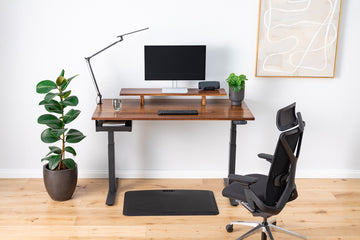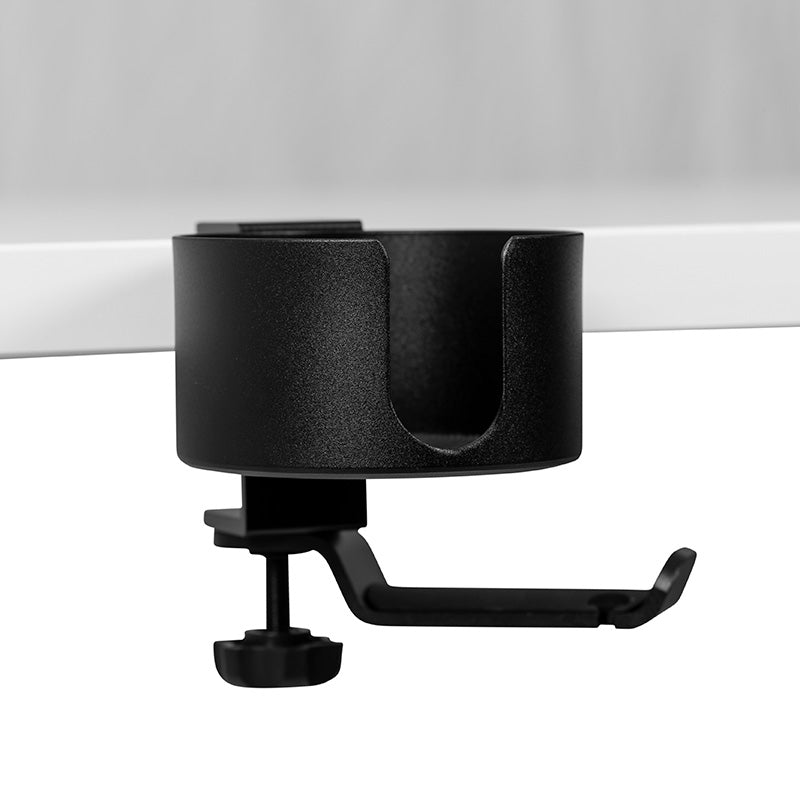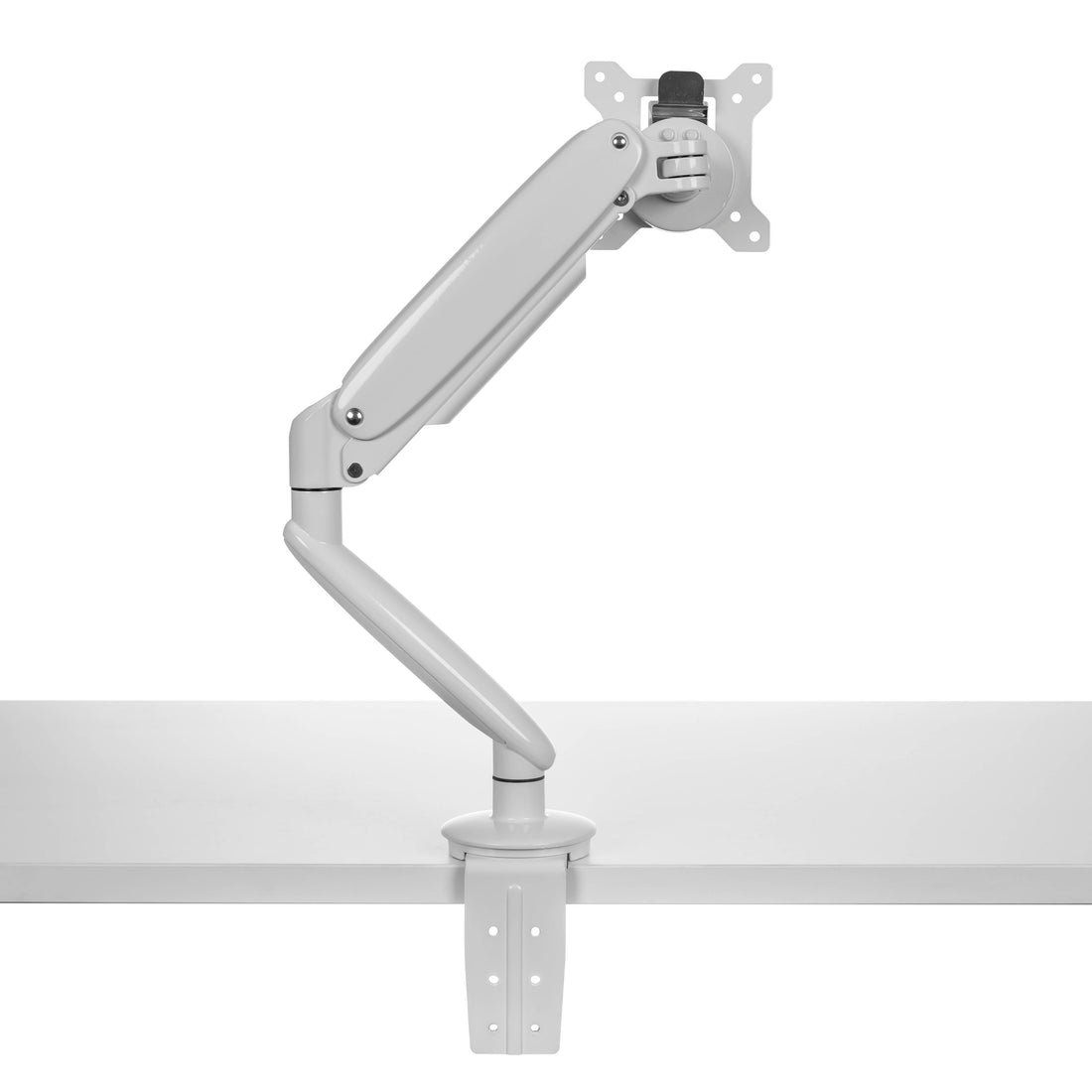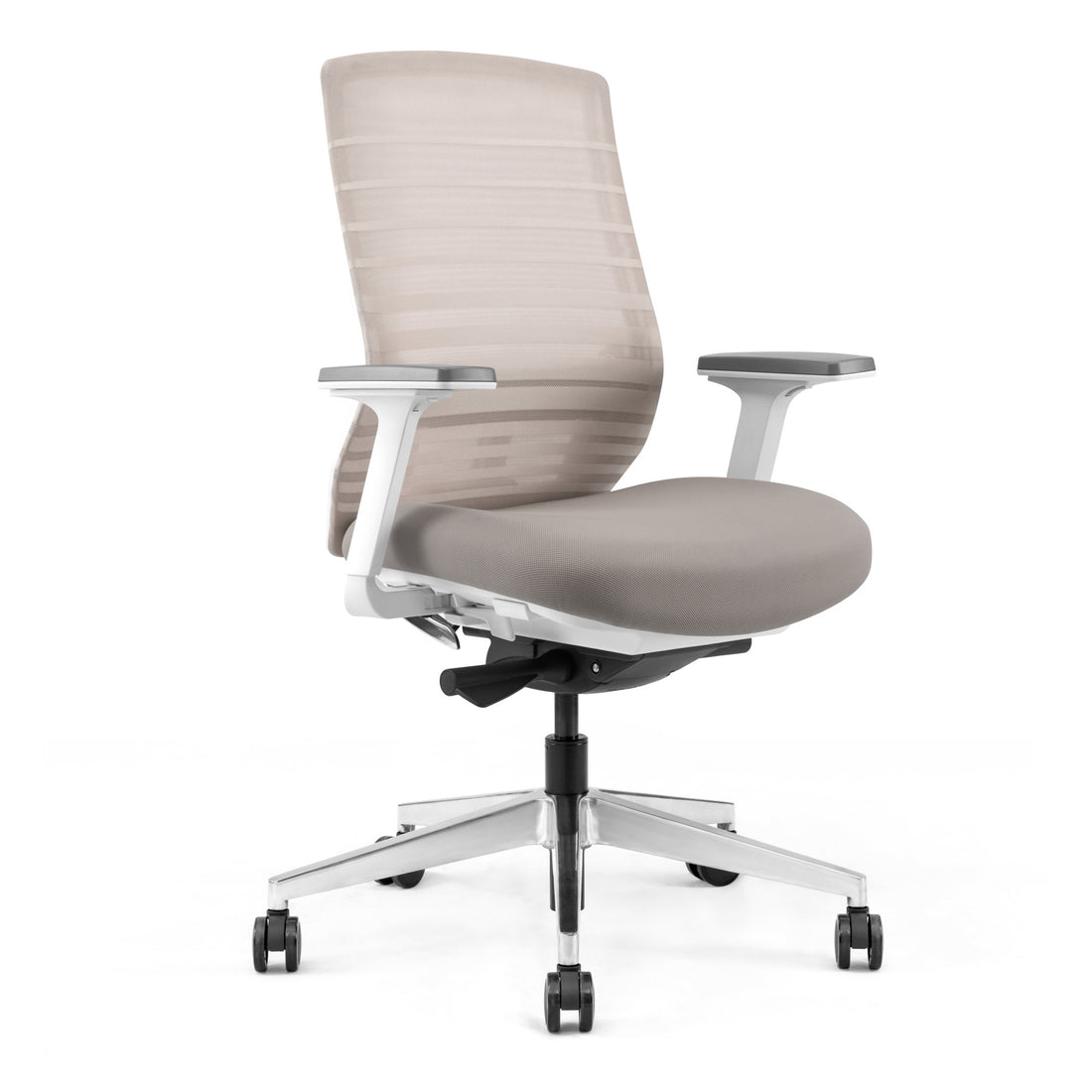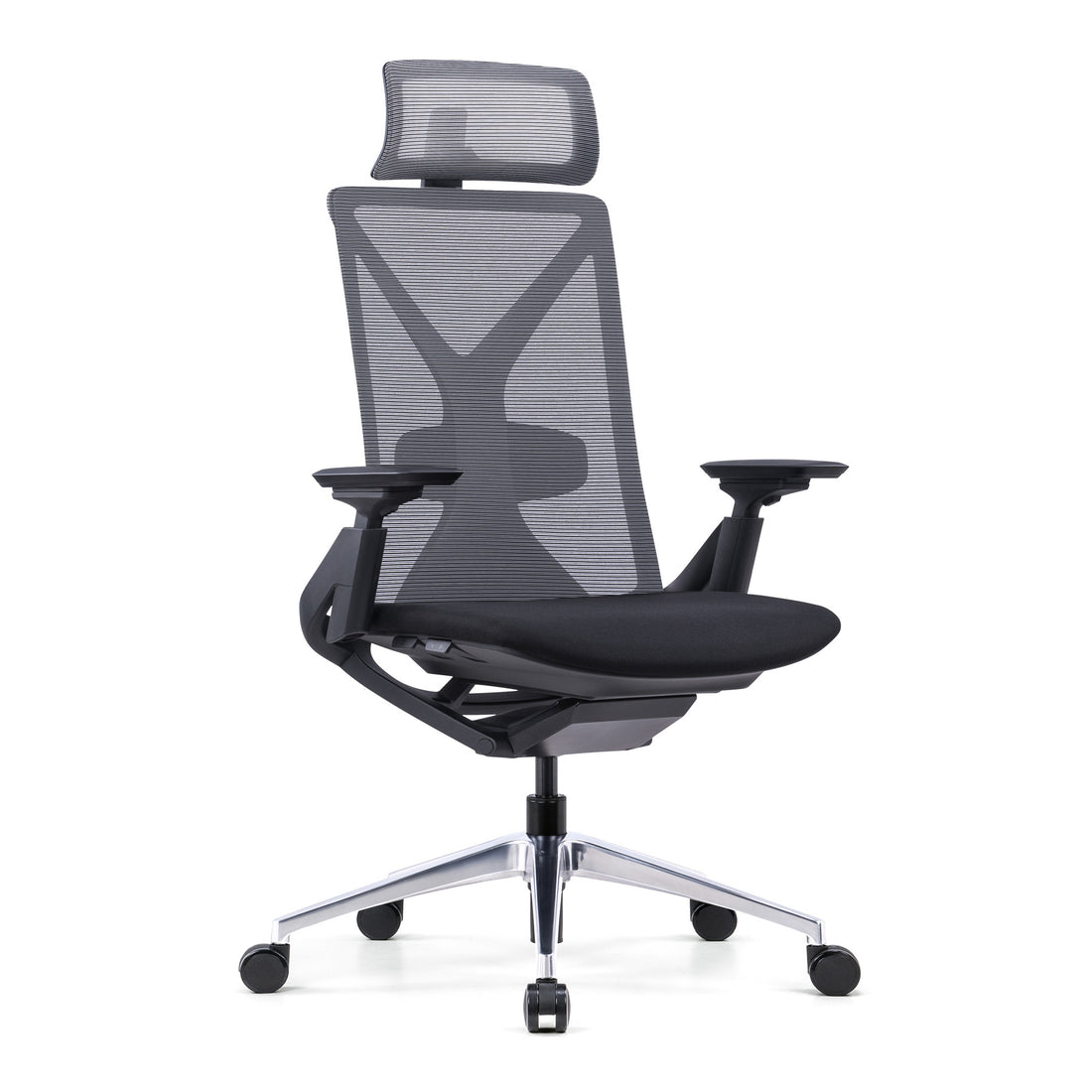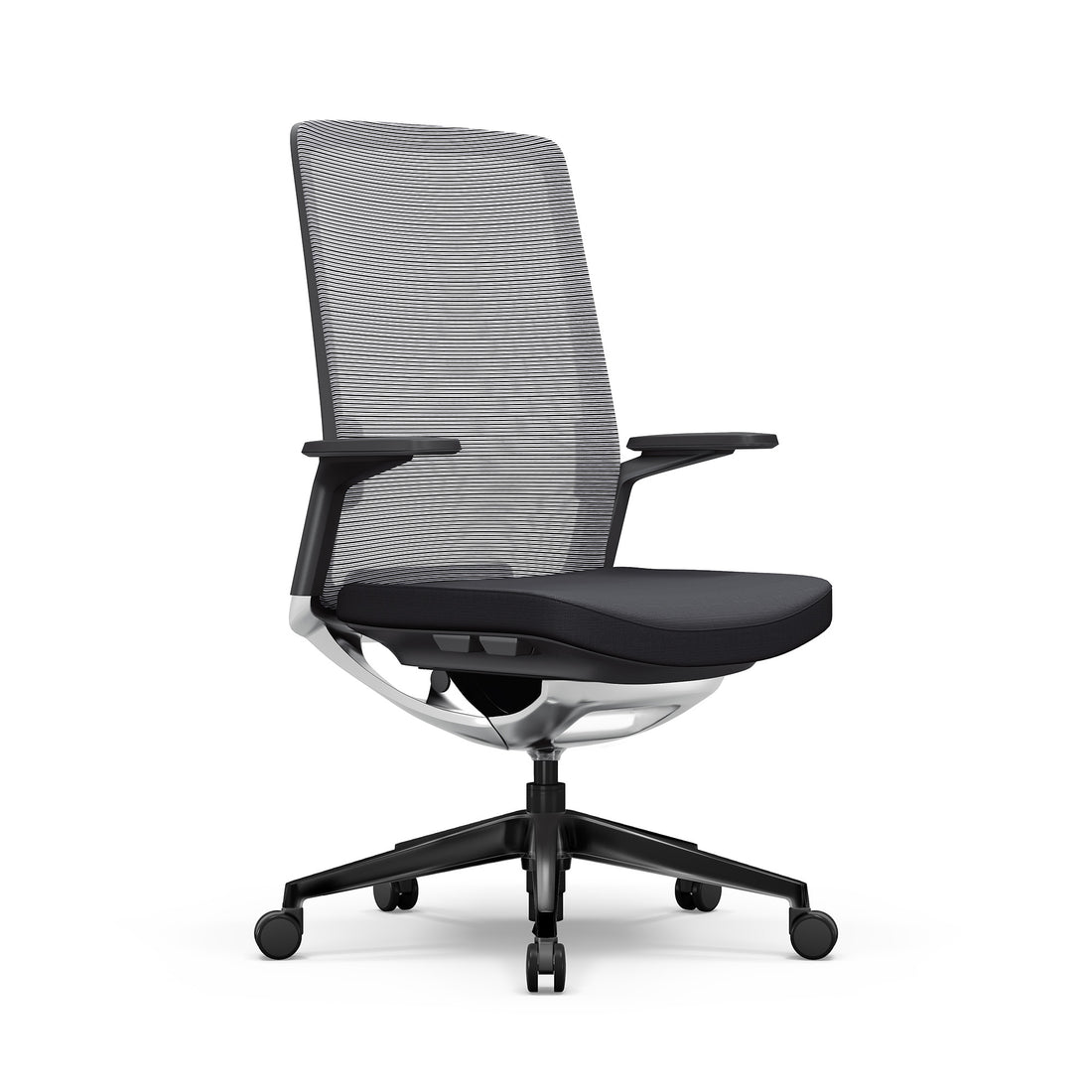Standing desks function through advanced mechanisms and ergonomic design, allowing users to transition between sitting and standing positions quickly. These desks are equipped with electric, manual, or counterbalanced systems that enable smooth height adjustments while maintaining stability and durability.
This detailed guide explains the mechanisms that power sit-standing desks, the operation of electric and manual systems, and the unique features of desk converters, giving you a clear understanding of how standing desks enhance workspace functionality and ergonomics.
What is a Standing Desk Mechanism?
A standing desk mechanism is a technology or system that allows the desk to adjust its height. Whether powered by electricity, manual effort, or counterbalance systems, these mechanisms ensure smooth, efficient, and safe transitions between sitting and standing positions. Knowing how standing desks work means exploring these systems and understanding their components.
Key Components of a Standing Desk
A standing desk amalgamates several critical components that provide stability, functionality, and adjustability. These components include:
-
Motors: Integral to electric standing desks, motors enable the desk to move effortlessly between different height settings. They are designed for durability, precision, and minimal noise.
-
Lifting Columns and Frames: These elements are the structural backbone of the desk and are responsible for supporting the weight of the desk surface, monitors, and other equipment. High-quality lifting columns are crafted to ensure wobble-free adjustments.
-
Control Panels and Switches: Positioned within easy reach, these user interfaces allow individuals to fine-tune the desk’s height. Modern control panels often feature memory presets, enabling users to save and recall their preferred height settings.
Motors: Single vs. Dual
Electric standing desks rely on motor systems to facilitate height adjustments, and the choice between single-motor and dual-motor systems plays a significant role in the desk's overall performance. Each system offers unique advantages, making it essential to match the motor type with your workspace needs and usage habits.
Single-motor systems are a popular choice for many standing desks.These systems use a single motor to drive both lifting columns simultaneously. The performance of a single-motor system largely depends on its quality. A well-engineered single motor can easily handle significant loads and provide smooth, reliable adjustments, sometimes outperforming lower-quality dual-motor systems. While they may generally adjust at a slightly slower pace, this difference is negligible in high-quality single-motor designs. Ultimately, the key lies in the motor's durability and efficiency, ensuring it can meet user demands, whether for lighter setups or more robust configurations.
On the other hand, dual-motor systems feature two motors—one for each lifting column—which can offer benefits in certain scenarios. The division of workload allows these systems to handle heavier setups efficiently, provided the motors are of good quality. Dual motors can deliver faster and smoother height transitions, making them appealing for users who frequently switch between sitting and standing. Additionally, they often operate with reduced noise levels, which can be advantageous in quiet workspaces. However, a dual-motor system's overall performance and longevity ultimately depend on the quality of the motors themselves, as poorly constructed dual motors may not offer the same reliability or durability as a high-quality single-motor system.
Lifting Columns and Frames
Lifting columns and frames serve as the structural backbone of a standing desk. These components are engineered to bear the weight of the desktop and any equipment, such as monitors, laptops, and accessories. High-quality lifting columns are constructed from durable materials like steel or aluminum, ensuring stability during adjustments. Additionally, advanced lifting columns are often telescopic, allowing smooth and wobble-free height transitions. The frames are designed to be modular, enabling compatibility with various desktop sizes and configurations.
Control Panels and Switches
The control panels and switches act as the interface for electric standing desks, making height adjustments simple and intuitive. Properly understanding and utilizing these controls is an important step in how to set up a standing desk for maximum ergonomic benefit. Located at the edge of the desk for easy access, these panels often include features such as:
-
Up and Down Buttons: Allow manual adjustment of the desk height.
-
Programmable Memory Settings: Users can save multiple height preferences for quick transitions.
-
Safety Lock Functions: Prevent accidental adjustments, a handy feature in shared workspaces or around children.
Some control panels even incorporate touchscreen displays or smart connectivity, enabling users to sync their desk settings with mobile apps for enhanced customization. These controls are central to the seamless operation of standing desks, highlighting another facet of how standing desks work to improve user experience.
How Electric Standing Desks Work
To understand how electric standing desks work, it’s essential to explore their motorized systems and advanced engineering. Electric standing desks use motorized systems to automate height adjustments, delivering convenience and ergonomic benefits with minimal effort. These desks cater to various user preferences by incorporating advanced engineering, precisely accommodating multiple positions.
How Motors Power Standing Desks
The motor system is the powerhouse of electric standing desks. It drives the motion of lifting columns, enabling smooth and effortless transitions. Depending on the desk design, motors can:
-
Operate in a synchronized manner: Ensuring both sides of the desk rise evenly to maintain stability.
-
Handle variable weights: From lightweight desktops to heavy dual-monitor setups.
Single-Motor vs. Dual-Motor Systems
The choice between single and dual motors depends on the quality and intended use rather than making a blanket comparison. A well-designed single-motor system can handle a variety of tasks efficiently, supporting moderate loads while delivering reliable performance. Similarly, dual-motor systems are engineered to accommodate heavier setups, offering enhanced stability and smooth adjustments. Both options can be quiet, durable, and dependable, with their effectiveness relying more on the build quality and design rather than the number of motors.

Power Sources for Electric Desks
Electric standing desks require a power source to operate their motorized mechanisms, enabling smooth height adjustments with minimal effort. The choice of power source impacts the desk's portability, convenience, and functionality. A direct connection to a wall outlet or battery system powers most electric desks. Understanding these power sources is another step in grasping how electric standing desks work in various environments.
Plugged vs. Battery-Operated Systems
Electric standing desks are powered through plugged or battery-operated systems, each offering unique advantages.
Plugged Systems connect directly to a wall outlet, ensuring a reliable, consistent power supply. They’re ideal for fixed workspaces and support advanced features like faster motor speeds. However, they limit portability and may add clutter with visible cords.
Battery-operated systems, by contrast, run on rechargeable batteries, offering portability and a cleaner, cord-free workspace. These systems are perfect for flexible setups or areas with limited outlet access. The downside is the need for regular recharging, and batteries may require replacement over time.
How Height Adjustments Are Controlled
Standing desk height adjustments are managed through control panels, which are intuitive and easy to use. Features of modern control panels include:
-
Up and Down Buttons: Allow simple height adjustments.
-
Memory Presets: Enable users to save multiple height preferences for quick transitions.
-
Digital Displays: Show real-time height measurements, helping users fine-tune their settings.
Understanding Manual Standing Desk Mechanisms
Manual standing desks provide a cost-effective alternative to electric desks, relying on user effort or mechanical systems to adjust the height. While they require more engagement, they eliminate the need for electricity, making them eco-friendly and more straightforward to maintain.
Hand Crank Systems: How They Work
Manual desks with hand cranks use a turning mechanism to change the height. This system engages gears within the frame, translating rotational movement into vertical motion. Though slower than electric desks, hand cranks are robust, reliable, and suitable for lighter workloads.
Counterbalance Mechanisms Explained
Counterbalance mechanisms, on the other hand, leverage innovative weight-balancing systems for easier height adjustments. These systems do not rely on electricity or cranks but instead use internal forces to maintain balance and allow smooth transitions.
Spring Counterbalance Systems
In spring-based systems, coiled springs provide the necessary force to counteract the weight of the desk surface and its contents. This approach is efficient, cost-effective, and shared in mid-range manual desks.
Pneumatic Counterbalance Systems
Pneumatic systems utilize compressed air to enable effortless height changes. These mechanisms are smoother and quieter than spring systems, making them ideal for users who prioritize comfort and precision.
Desk Converters: A Simplified Mechanism
For individuals seeking to upgrade their workspaces without replacing their desks, desk converters provide a practical and cost-effective alternative. These versatile tools sit atop traditional desks, offering the functionality of standing desks by elevating monitors, keyboards, and other essentials. By integrating a desk converter, users can enjoy the ergonomic benefits of a standing desk while maintaining their existing office setup. Although not motorized, their straightforward operation provides insight into how standing desks work through mechanical systems.
How Desk Converters Work
Desk converters operate through straightforward yet efficient mechanisms designed to provide height adjustability and improve workspace ergonomics. Most models feature a sturdy base that anchors the converter securely to the original desk and an adjustable platform that moves vertically to achieve the desired height. This dual-layer design allows users to transition between sitting and standing positions seamlessly. Depending on the model, the adjustment mechanism can be manual or assisted, offering varying levels of ease and customization.
Key components of a desk converter include:
-
Base Platform: Provides a stable foundation, ensuring the converter stays firmly in place even during adjustments.
-
Lift Mechanism: Powers smooth and controlled height changes, enabling users to position their workspace comfortably.
-
Adjustment Controls: Often designed as levers, handles, or buttons, these controls ensure user-friendly operation for all skill levels.
These converters ensure the active workspace is ergonomically positioned, reducing strain on the neck, shoulders, and back, even during long work hours. Additionally, they are compact and portable, making them an excellent choice for users looking to enhance their current desk setup without investing in a full-standing desk. By accommodating a range of height preferences, desk converters provide flexibility and convenience for healthier, more productive workdays.
Types of Desk Converters
Desk converters come in various designs, each tailored to accommodate different work styles, preferences, and ergonomic requirements. Choosing the right type depends on how frequently you plan to adjust the height and weight of your equipment and your desired level of convenience.
Fixed-Lift Converters
Fixed-lift converters are operated manually, using locking systems or levers to adjust the height. While they may lack the advanced features of gas-assisted systems, they are robust, affordable, and straightforward. They are an excellent choice for users who don’t require frequent adjustments.
Gas Spring-Based Converters
These converters incorporate a gas spring mechanism to provide smooth and effortless transitions. The compressed gas helps counterbalance the weight of the equipment, making it easy to lift and lower the desk surface. Gas spring-based converters are ideal for those who prioritize ease of use and smooth operation.
Comparing Standing Desk Mechanisms
When choosing a standing desk, understanding the strengths and weaknesses of each standing desk mechanism is essential. By comparing electric desks, manual systems, and desk converters, users can identify the best solution for their workspace.
Speed and Ease of Adjustment
Electric desks lead the pack in terms of speed and convenience. With a simple button press, these desks transition seamlessly between sitting and standing positions in seconds. Manual systems, including hand cranks, require more physical effort and are slower, making them better suited for occasional adjustments. Desk converters offer moderate speed, balancing affordability with usability.
Weight Capacity and Stability
Weight capacity is a critical factor for standing desks. Electric desks, especially dual-motor models, can support heavy setups involving multiple monitors and accessories. Manual systems and converters vary widely, with some designed for lightweight setups and others capable of supporting heavier loads. Stability across all mechanisms depends on the quality of construction and design.
Noise Levels Across Mechanisms
The noise generated during adjustments can impact the usability of a standing desk, particularly in quiet office environments. Electric desks equipped with advanced motors often operate silently or produce minimal noise. Manual systems may generate mechanical sounds during operation, such as clicks or creaks. Gas spring-based converters are typically quiet, providing a smooth and noiseless experience.
Durability and Lifespan
Durability depends primarily on the quality of materials and proper maintenance. High-quality electric desks, whether single or dual motor, are designed for extended use, with many undergoing rigorous testing to ensure longevity. Similarly, manual systems offer robust performance when built with durable components. Desk converters, especially gas spring models, can also provide long-lasting functionality when their mechanisms are adequately maintained. Ultimately, the lifespan of any system depends more on the build quality and care rather than the type of mechanism alone.
Key Features of Electric, Manual, and Converter Desk
When choosing a standing desk, it’s essential to understand how each type differs in functionality, operation, and suitability for different work environments. Electric desks provide advanced motorized systems for seamless transitions, manual desks offer simplicity without requiring electricity, and desk converters present an easy way to add height adjustability to existing workspaces. The table below outlines the core features of each type, helping you decide which option best fits your needs.
| Feature | Electric Desks | Manual Desks | Desk Converters |
| Mechanism | Use motors for effortless height adjustments. | Use hand cranks for manual height changes. | Sit atop desks, offering manual or electric adjustability. |
| Speed | Quick and smooth with button control. | Depends on user effort; slower than electric. | Faster for electric models; manual depends on effort. |
| Power Source | Requires a power outlet. | No electricity needed. | Electric models need power; manual models do not. |
| Weight Capacity | Supports heavy loads, including multiple monitors. | Handles lighter loads; ideal for basic setups. | Supports up to 50 kg additional weight. |
| Noise Levels | Quiet operation with advanced motors. | Silent adjustments without motors. | Electric models may hum; manual ones are silent. |
Common Problems with Standing Desk Mechanisms
While standing desks are built for durability and ease of use, occasional standing desk mechanism issues can arise. Identifying and addressing these problems quickly ensures optimal performance and extends the lifespan of your desk.
Uneven Height Adjustment
One of the most common issues with electric desks is uneven height adjustment. This problem typically arises from synchronization errors in dual-motor systems or misaligned lifting columns. Users may notice that one side of the desk moves slower or stops altogether.
Solution:
Most electric desks include a reset function to recalibrate the motors. To reset the desk, consult the manufacturer’s instructions or refer to this reset guide.
Standing Desk Won’t Go Up
An electric desk refusing to rise is often linked to overloading or motor failure. The motors may struggle to function if the desk’s load exceeds its weight capacity. Wiring issues or a faulty control panel can also be the cause.
Solution:
Check the weight on your desk and remove any unnecessary items. Inspect the wiring for visible damage and test the control panel. Detailed troubleshooting steps are available here.
Noise During Adjustments
While electric desks are designed to operate quietly, wear and tear can lead to unusual sounds during adjustments. Manual systems may also creak or click if not correctly maintained.
Solution:
Clean and regularly lubricate the desk’s moving parts to reduce friction and noise. Ensure screws and bolts are tightened securely.
Final Thoughts on Standing Desk Operation
Understanding how standing desks work provides invaluable insight into their operation and maintenance. Whether you’re choosing an electric desk for its convenience, a manual desk for its simplicity, or a converter for its versatility, knowing the mechanisms behind these tools helps you make informed decisions.
Why Understanding Mechanisms Matters
By familiarizing yourself with the inner workings of standing desks, you empower yourself to:
-
Optimize your workspace: Select the correct type of desk for your unique needs.
-
Extend the desk’s lifespan: Prevent and address mechanical issues before they escalate.
-
Enhance productivity and health: Create an ergonomic environment that supports your well-being.
From motorized adjustments to manual cranks and desk converters, standing desks come in many forms, each tailored to various needs. By leveraging this knowledge, users can literally and figuratively elevate their workspaces to new heights.
FAQ
How Does a Standing Desk Motor Work?
A motor drives the lifting columns, enabling smooth height adjustments. Advanced systems synchronize movement, prevent overload, and ensure stability for precise transitions.
What Mechanism Do Standing Desks Use?
Standing desks use motorized, manual, or counterbalance mechanisms to adjust height. Electric systems rely on motors, while manual options use cranks or weight-balancing technologies.
How Does a Manual Standing Desk Work?
Manual desks adjust the height using hand cranks or counterbalance systems (springs or pneumatic). The mechanism translates user effort into vertical motion for ergonomic positioning.
What Is the Lifespan of a Standing Desk Mechanism?
With proper use, standing desk mechanisms typically last 10–15 years. Regular maintenance, like cleaning and lubrication, ensures durability and consistent performance.


